Iceland: How much things cost & how to visit on a low budget
Since its currency crash in 2008, Iceland had gone from absurdly expensive to somewhat reasonable in cost, and that has prompted thousands of new tourists to stream in to see what all the fuss is about. It’s hard to find a visitor to Iceland who didn’t absolutely love the place, but you won’t find anyone who tells you it’s cheap, so planning ahead is essential. Prices have continued to creep up in 2015 and 2016, so it’s again among the most expensive European destinations.
Many visitors arrive on an Iceland stopover going between North America and Europe, but with very cheap flights to and from Europe it’s becoming popular for adventurous types from all over the continent. In 2013 I spent 9 days in the country, always checking for prices and the cheapest ways of doing things, so below I can lay out how to budget and what to do to keep costs down.
Note: This article was first written in late 2013, but all prices have been updated as of December 2016 to be current through 2017.
Reykjavik vs. the rest of Iceland: Where to go

If you have one night or a few nights you are better off taking a bus or renting a car directly from the airport and heading east along the southern coast for some of the country’s best sights. If you have at least a week you’ll want to rent a car and do a lap around Iceland’s famous Ring Road, allowing you to see nearly everything the country has to offer in a neat and organized way.
Iceland accommodation: Hostels, guesthouses, and hotels
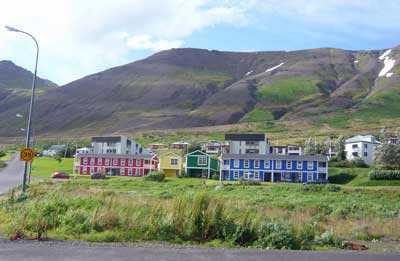
The most common form of accommodation in Iceland is a guesthouse and hostel combination which will have a mix of private rooms and dorm rooms, with shared bathrooms in down the hall. Most of them have fully equipped shared kitchens, so self-catering is at least as popular as eating out while exploring Iceland outside of Reykjavik.
High season (June through August) typical accommodation prices
All prices quoted in US dollars at a rate of about 110 Krona to US$1 in December, 2016.
- Hostel dorm bed: US$34 to US$58
- Single private with shared bathroom: US$85 to US$135
- Double private with shared bathroom: US$118 to US$140
- Double private with en-suite: US$130 to US$320 (and up)
Prices in Reykjavik are a bit higher than elsewhere in the country, but not by much. Prices in the off season are about 30% lower than in high season, but in the slowest months many places close so rates never go much lower than this.
Most Iceland guesthouses are NOT on the normal hotel-booking sites
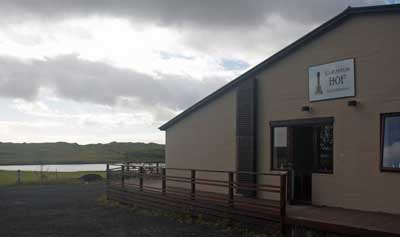
The good news is that when you get to Iceland, the tourism office will give you a directory of almost every guesthouse on the island, and there are other ways of finding these guesthouses and other informal accommodations. Even as of late 2016 you should be able to book a double room (with shared bathroom) for about US$120 per night in most towns in Iceland. If you do a hotel search you might see prices that are double that, but those are in the few formal hotels with 24-hour lobbies and such.
Increasingly, Airbnb and other online rental sites are the best place to find guesthouse accommodation in Iceland. As of only a few years ago, most places would be booked by phone or in person on arrival day, but now more and more places can be pre-booked, at reasonable prices.
Sleeping bag accommodation in Iceland

In a ‘sleeping bag accommodation’ (as it’s known in Iceland) you’ll get a bed with a mattress and often a pillow. So with even a cheap indoor sleeping bag, you’ll be comfortable and warm while saving quite a bit of money. For those renting cars, this is a highly recommended strategy.
You can rent sleeping bags in Reykjavik starting at around €12 per week.
Most Iceland attractions are free (the good news)
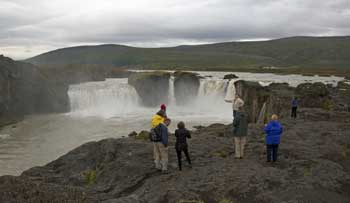
So to see all the glaciers and waterfalls and volcanic beds and other scenic attractions, it’s all free of charge with no admission cost or even parking fees. The larger attractions also have visitor centers where you can get local advice for free as well.
Iceland transportation: Rental cars and buses
Even as a lifetime public transportation fan, I’m very glad I gave in and rented a car to tour Iceland, even as a solo traveler. For the most part the roads are in perfect condition and virtually empty even in high season, so driving couldn’t be easier. Also, the country has stunning vistas every time you turn a corner, so being able to stop in the middle of the road even if there is no room to pullover, is critical.
The buses are modern but also expensive and running on very limited schedules. If you only have enough time to cover the main sights along the southern coast you might buy one of the bus passports that allows you to hop on and hop off, though a rental car is still much better and easier.
Rental cars in Iceland: What you need to know
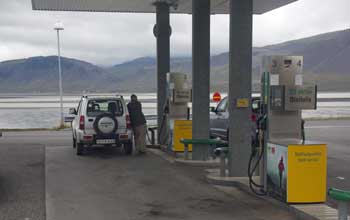
For an extra fee you can pay to reduce that deductible to almost nothing, but the more popular add-on is the Gravel and Glass insurance. For around €10 per day with this coverage you have a zero deductible if the vehicle gets damaged by gravel or if any glass gets broken by flying rocks (or anything else). Unfortunately, many of Iceland’s side roads and even a few of the main roads are covered in gravel, and if you drive at anything above a crawl, there will be some gravel flying around.
Personally, I normally decline add-ons like this but in this case I bought the Gravel coverage after reading a few horror stories in online reviews. I didn’t get any damage that I’m aware of, but the peace of mind was worth a LOT when driving on isolated gravel roads so I wasn’t petrified that I was chewing up the paint job just trying to stay safe on the roads.
Rental cars in Iceland
- 2-wheel drive compact (manual): US$230 per week and up plus add-ons
- 2-wheel drive compact (automatic): US$270 per week and up plus add-ons
- 2-wheel drive mid-size: US$450 per week and up plus add-ons
- 4-wheel drive van or SUV (automatic): US$650 per week and up plus add-ons
Daily rates are about 20% as much as weekly rates, so 5, 6, or 7 days cost the same.
Add-ons
Gravel coverage: US$10/day
GPS (highly recommended): US$10/day
Additional collision waiver: US$10/day
Fuel prices in Iceland
Every gas station in the country has the same prices, which don’t seem to change much. As of December 2016, a liter of petrol is 194 Krona, which is about US$1.75 or €1.63, or about US$7.50 per gallon.
Bus pass prices in Iceland
For a quick day trip from the airport to some local sights you can spend as little as US$90 per person, but for the longer distance buses you’ll spend at least US$130 to US$250 depending on length of time in order to hop on and hop off.
A Ring Road passport will cost around US$400 per person, so for two people it’s no cheaper than renting a car, even after fuel is taken into account, and for 3 or 4 people it’s definitely cheaper renting a car.
Food prices in Iceland
Here’s the thing: sit-down restaurants in Iceland are very expensive by international standards, so there aren’t very many of them. Obviously Reykjavik has many restaurant choices but most smaller towns might have only a few at most. The good news for budget travelers is that fast-food options are more plentiful, and self-catering is even cheaper and easier.
Restaurant prices in Iceland
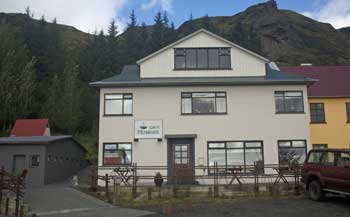
A soft drink, coffee, tea, or even bottled water will generally be between US$3 and US$5 in a restaurant. A pint of beer will typically start at around US$7 at even the cheapest places, while wine and spirits cost even more.
Fast food prices in Iceland
In Reykjavik and larger towns (which might only have 2,000 residents) you’ll have many fast food options including Subway, Quiznos, and usually a few local burger or hot dog places. Prices for a sandwich at Subway are about US$6 for a 6-inch and US$10 for a foot-long, so they aren’t too much higher than elsewhere in Europe, and are sure cheaper than proper restaurants.
More good news for drivers is that many gas stations around the country have fast food restaurants built in, so it’s fast and easy to pick up a sandwich or hot dog by the side of the road.
Hotel breakfast prices in Iceland
Many hotels and guesthouses in Iceland serve breakfast, but it’s almost always at an extra fee, and many don’t serve anything at all. If a breakfast is offered it will typically cost between US$12 and US$15 for a buffet of cereals, bread, cold cuts, cheeses, hard boiled eggs, juices, coffee and tea, and perhaps some pastries.
Making your own self-catering breakfast will be cheaper, but since you can stuff yourself for a flat fee at the breakfast buffets it might be worth it to save yourself the hassle of shopping the day before and making breakfast in the morning.
Self-catering in Iceland
The best budget tip for Iceland is to buy and prepare your own food, and you can literally do it for all three meals per day if you prefer. Since Iceland has almost no national “must-try” dishes, you can buy and prepare your own food without worry about missing anything meaningful.
Nearly every guesthouse in Iceland has a shared kitchen where at least half the guests will be storing and preparing breakfasts and even dinners. They have refrigerators, coffee makers, electric kettles, pots, pans, dishes, and silverware, as well as salt and other spices, so you can buy just the food and you’ll be able to prepare it all.
Supermarket prices in Iceland

For example, you can buy a 400 gram (1 pound) block of Havarti cheese for around US$5, but a similar looking cheese right next to it on the shelf might be US$15 for the same amount. The same is true for lunch meats. Sliced ham can be US$3 for enough to make 2 sandwiches, but sliced roast beef might be US$10 for the same amount.
Some sample prices in the cheaper Iceland supermarkets
- Sliced white bread: US$1.70 per large loaf
- Fresh baguette: US$1.50 to US$2 each
- Hot dog buns: US$2.50 for 5
- Pork hot dogs: US$3.50 for 5 large hot dogs
- Cheap Havarti or other local cheese: US$5 for 400 grams (1 pound)
- Imported cheese: US$10 to 15 for 400 grams (1 pound)
- Sliced ham for sandwiches: US$5 for 400 grams (1 pound)
- Sliced roast beef for sandwiches: US$12 for 400 grams (1 pound)
- Pasta: US$1.50 for .5 kilogram (1.1 pounds)
- Pasta sauce: US$3 for a .5 liter jar
- Ground beef: US$5 for .25 kilos (half pound)
- Bake-at-home pizza: US$5 to US$7 for one person
- Bag of tortilla chips for 2 or 3 people: US$2
- Jar of salsa for those chips: US$3
- Breakfast cereal: US$3 to US$5 per box
The prices above are for many of the cheaper and more common things that budget tourists buy in Iceland. As mentioned above, if you want something exotic and imported, it might cost double or triple what you pay at home, if you can find it at all.
Alcohol prices in Iceland
In restaurants and bars throughout the country you’ll pay at least US$8 for a pint of beer, and at least US$10 for a glass of wine or a simple cocktail. If it’s a fancy place you’ll pay even more, of course.
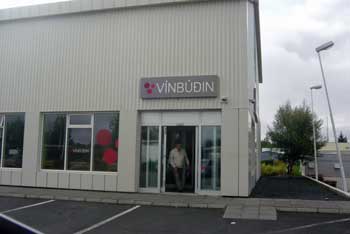
Here are some typical prices for alcohol:
- 330ml can of local beer: US$2 to US$3
- 500ml can of local beer: US$2.50 to US$4
- Cheapest bottle of wine: US$10 to US$12
- .7L bottle of off-brand vodka: US$30
- .7L bottle of mid-level brand vodka: US$50
Bottom line on doing Iceland as cheaply as possible
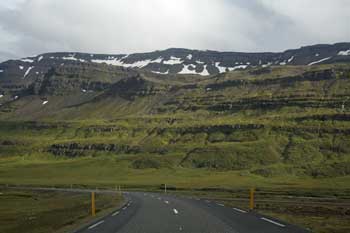
Whether you are going to get dorm beds or private rooms, as long as you will have your own wheels it’s worth renting a sleeping bag. You get the same bed and same services for about US$10 less per night, which will pay for a week’s rental of an indoor sleeping bag.
Unless you are a terrible driver or afraid to drive, it’s highly recommended to rent a car instead of trying to get around using buses. Once you get there you’ll see that having 100% flexibility with a car compared to almost no flexibility with a bus, is worth a LOT.
Instead of trying to be cheap with transportation, be cheap with self catering food and drinks for yourself. If you have at least a small group of people you’ll be able to have a party each evening in or near the shared kitchen of your guesthouse, and it will be more lively than any restaurant in town.

Hi Roger, this site is so helpful. I am from south Africa and my friend and I want to travel to Iceland for a week, in September.
my first question is, do we have to pay in Euro’s or can we pay with the Icelandic krona for everything?
And my second question, since we will be there for only a week, would it be a good idea to get accommodation in Reykjavik for the entire stay and drive in and out?
Thanks
Lerato,
Always happy to hear that this stuff helps. Once you get to Iceland your choices of paying for things will be in Icelandic Krona or with plastic. I’m sure at least some places take Euros (probably not at a great exchange rate), but you’ll be best off for cash in krona. Actually, if you use cash you’ll be one of the very few people doing that in Iceland. I’ve never seen such a credit or debit card society as there. All the locals pay for literally everything with a card, and you should try to do the same if possible.
When you get there you should pull out some krona from a machine to cover small purchases at gas stations and such, but it’ll be best if you pay with plastic.
If you are only staying for 7 nights then it might be a rush to do the whole Ring Road, although you could do it and you’d absolutely love it. I actually got almost back to Reykjavik in about 5.5 days on the Ring Road and it was honestly my favorite travel experience ever. I spent the last 1.5 days in the Reykjavik area doing the Golden Circle and a few other things, and it was a bit of a let down.
Honestly, Reykjavik is interesting for maybe one day and one night, although it’s not like you’d be bored if you stayed longer. It’s just that Iceland is about the spectacular waterfalls and volcanic sights, and the best ones are all away from Reykjavik. Also, Reykjavik is fairly expensive and parking won’t be easy in the center, so I wouldn’t base myself there once I had a car, at least not for more than a day or two.
So your options are to spend maybe 24 hours in Reykjavik and then hop right on the Ring Road for the other 6 days. That’s what I’d do if it were me. You have to wake up fairly early and put in some pretty long driving days, but especially in September (I went in late August) the roads will be totally empty and it’ll be easy to find guesthouses.
If you’ve ruled out the Ring Road then the other great option is to drive along the southern coast to at least the town of Hofn. Going beyond Hofn it’s some craggly beach roads that may not be worth the trouble, but between Reykjavik and Hofn the scenery is excellent and the roads are in great shape. Spend a night or two in Hofn and also a night or two in Vik on the way back. They are both small towns with quite a few accommodation options, and lots of great sights nearby.
You could even go a bit north of the capital to see some different scenery on your way back. Either way, I wouldn’t recommend more than 2 nights in Reykjavik unless you are really keen to see its unusual nightlife scene, where all the locals get drunk at home and go out at midnight because drinks are so expensive in the clubs.
As always, feel free to ask any other questions if you have them. -Roger
This is so useful, thank you! And thank you for generously answering all of our questions, years later! 🙂
Just wondering if it is suggested to book a dorm bed in a hostel in advance, or if it is okay to just do it as we arrive, or as we travel since we are driving and don’t know yet where we will be? We will be going end of May to early June.
Thanks!
Helen,
I love doing this sort of thing so I’m happy to help.
One of the many interesting things about Iceland is that it is somewhat filled with guesthouses where nearly everyone seems to stay exactly one night. Especially on places around the Ring Road (except for the southern coast between Reykjavik and Hofn), they seem set up for new guests each night. In other words, most people will be doing what you are doing, so you should be fine making arrangements as you go.
That said, I got a local SIM card there and found it extremely helpful to have a phone and the ability for text messages as I drove, and coverage is great all around the Ring Road. If you can do the same then you can call ahead to book a bed or room once you are sure how far you’ll get each day. When you get there you’ll be offered a sort of catalog that lists virtually every guest house and hotel in the country. Many of them are also listed online, but not all of them. So once you know, at, say, 2pm, that you are going as far as the next town 100km away, you can call ahead and book a place before you get there. I think in July and August many of them fill up, but when you are going you should be able to book at the first or second place you try each day. Have a great trip (I’m sure you will). -Roger
Thanks for the great info! I’m planning on travelling to Iceland for our summer hols 6 weeks in July thru August. Accommodation and flights all booked. Our big conundrum is transportation. There’s my wife and I and 2 kids 7 and 5. We were thinking of public transport as we’re staying for a long time and didn’t like the idea of costly car rental. AS the kids are so young, I understand public transport is free and we may even rent a car for occasional day/overnight trips. The bus pass seems like a good option for us. Anyone have other recommendations for transportation for a long trip?
Thanks in advance.
Paul,
On any trip of 10 days or fewer I’d highly recommend a rental car because it’s SO worth it even though it can be expensive. However on your trip I get that you don’t want to rent a vehicle for the entire time.
I researched the various bus passes and they seemed expensive, yet at least they go to all of the interesting places, so it seems like a good option if you’ll be moving slowly. The only challenge I think you might face is that the buses only go once or twice a day on some routes, so you might have to really bend your schedule to work around their schedule. And also, Reykjavik is really the only walkable place in Iceland, and even then it’s only the main center. In every other town you’ll find that things are really spread apart like in the rural US or Canada. Best of luck. -Roger
Fantastic information. We’re going to Iceland in June and now decided to hire a car after reading your info. . We arrive in Keflavik at night so thinking of an overnight stay there. Next day picking up hire car and driving to Hohn, staying overnight then heading to Reykjavik. Next day back to Keflavik via Blue Lagoon. Does that sound feasible and what would we see?
Shona,
I’m always happy to hear that this information is helpful. I didn’t spend much time in Keflavik itself, and there doesn’t seem to be much to see. As far as I can tell, it’s a town built around the airport, which used to be a military base. There is almost nothing between Keflavik and Reykjavik, by the way, except for lava fields.
So if you can save on a day of car rental then your plan might be ideal, but if it’s the same number of rental days then it’s a tough call. The city of Reykjavik is interesting for a couple days, although the central hotels are quite expensive, so staying near the airport might save money.
I’m not aware of a town in Iceland called Hohn, so I think you mean Höfn? If so, it’s an amazing drive through the best scenery on the island. You’ll have no shortage of places you’ll want to stop and see on the way and the way back. By the way, I rented a car (from Sixt) in Reykjavik and returned it to the airport for basically the same price as if I’d returned it to the same place. So you can probably do the same if that makes it easier.
If you have any specific questions that I missed, let me know, and have a great trip. -Roger
Dear Roger,
I am alone female traveller to Iceland. Planning to travel end of March 2016 i.e from 21st March to 31st Marc. As I am a lone traveler, what is the best way for me to travel around the country. I want to see black beach, Jokarsalun, ice caves, Myvatn, golden circle and blue lagoon.
What can be the most budgeted and safe way to travel?
Regards
Ekta,
As I probably mentioned above, I did Iceland solo for 9 days myself on my trip. I looked into the bus tours and spoke to some people who had been there, and ultimately decided that it was worth a splurge of a 7-day car rental for my trip around the Ring Road. I’m extremely happy that I did it, but I understand that not everyone can afford it. If that is the case then I think I’d recommend the bus pass that allows you to do your own lap around the Ring Road, stopping at all of the most popular sights along the way.
Since you have 10 days there you’ll have plenty of time to do the whole Ring Road AND stay a couple days in Reykjavik. My understanding is that those buses go only once or twice per day, so you have to go on their exact schedule. On the other hand, those tourist buses will be filled with other independent travelers doing exactly what you are doing, so they should be enjoyable for social people. The scenery along the Ring Road is so amazing that I think it would be a shame to skip it.
By the way, the Blue Lagoon is really lovely but it’s somewhat expensive and there are other thermal spas elsewhere in the country that are sort of similar and WAY cheaper. It’s also very close to the airport, so I’d save it for your way home if you still want to see it. I went there and looked around for free, which was nice. If you want to swim and get a locker and all that it’s like US$50 or more. Almost all of the other sights in the country are free.
Hopefully this helps and let me know if I can assist you more. I loved Iceland and am happy to help other people plan visits when I can. -Roger
Hi Roger,
Not sure if you have any more up to date info on iceland, but I’m planning to go this year in September.
I’m very lucky to have won a travel prize which will cover my flights and hotel accommodation in Reykjavic; this means I actually have to stay in a hotel covered by the travel company, which are expensive, but as I’m not paying..happy days..! This does mean though that I’m tied to Reykjavic accommodation-wise for my entire stay.
I’ll only have a week to 10 days due to work commitments.
I’m a keen horse rider and dying to ride the unique Icelandic horses. I’ve researched some establishments and it seems they’ll come and collect you from your hotel and bring you out to the riding venues for day rides around the beautiful countryside, or on the yearly round up that takes place in September.. I’l be taking at least two or three days for that, which will be my biggest expense, but I also want to get out to the Golden Circle and hang out in Reykjavic a bit.I’ve read that the Blue Lgoon isn’t all it’s cracked up to be; expensive, not really a natural lagoon ..heated by the nearby power station..Ugh..!!So an alternative thermal pool? getting there?
I’m a bit averse to bus tours, prefering to do my own thing, but I’m also concerned about the cost of car hire for one person – me – for what maybe only one or two days hire. Your info re car hire is great, but I’m gonna be on a budget after all that riding expense (approx €100 ++ per day)
I’d also like to do some trail walking/half day hikes if that’s possible at a doable distance from Reykjavic..??
I’ve been thinking about iceland for years, so want to make the best of my time there.
Thanks a million..
Marie
Marie,
Congratulations and that sounds like it’s going to be an incredible trip. Those Icelandic horses look really amazing and it’s great to hear that you can actually experience that yourself.
The Blue Lagoon is actually quite amazing and worth a look for sure, but it costs something like €40 to actually swim in it so you may want to skip that part and save the money for elsewhere. There are actually a few other similar (smaller) thermal pools in Iceland that are also heated by power plants. It’s nothing to worry about and the Iceland people seem to love them as much as the tourists do.
Since so many visitors to Iceland only ever stay in Reykjavik, they have a large industry for tours and activities that leave the city in the morning and come back in the evening. You can do a lot of sightseeing based there, but I’d still hope you can afford maybe 2 nights on the road. The city of Reykjavik is nice but the tourist area can be seen in one or two days, and the nightlife there is very expensive.
My recommendation for those not able to do the full Ring Road is to try to make it to Hofn and then back to Vik along the southern coast. The buses go to those places and stop at the various sights along the way. If you can afford even 2 or 3 days of a rental car I think you’ll find it’s one of the favorite travel experiences you’ve ever had (I rented a car on my own as well), but if you don’t do that then I’d try one of the bus things. I didn’t research it fully after I decided to rent a car, but I know there are a couple companies that cater to visitors wanting to see the famous sights along the southern coast. Do one or the other, but I wouldn’t recommend ONLY stay in or near the capital the whole time. Have a great trip and let me know if you have other questions I might help with. -Roger
Hi Roger,
Great blog entry! Very informative and on-point. I’m not sure if you have replied to this question before but there are a lot of comments so I can’t read it all through.
I am going to Iceland on Feb 7-12. I am thinking of taking a bus tour but you mentioned it’s not worth it. I don’t have an international driver’s license so self-drive is out of the equation. What can you suggest so I can go to the scenic places like the Glaciers, hot springs, volcanoes, etc?
Thank you very much!
Brix,
Thank you. I don’t believe I’ve ever said that the bus tours are not worth it, mainly just that a rental car is a better and worthwhile option if you can do it. If someone asked me if they should go to Iceland even though they couldn’t rent a car I would say absolutely yes. The place is amazing and I am sure there will be some social benefits to being on a bus tour as well.
Since I didn’t do one of those I didn’t research them fully, but before I decided to rent a car I did look into them and I saw many buses pass by while I was there. I think in 5 days you are best off spending a day or maybe two in and near Reykjavik and the rest of the time going along the southern coast to Hofn and back. I believe they offer a passport sort of thing that is a fixed price for one full loop of their south shore service. My understanding is that those buses stop at all of the main highlights, including the big national park and a few of the waterfalls and such.
As long as it’s the tourist-oriented bus instead of the long-distance commuter bus, I think it will take you to all of the best places. Have a great trip. -Roger
Hi Roger,
Planning a 5 day holiday in mid March with my wife, I am a ok driver but never driven on the other side of the road (I am from the UK) so worried about this? Planning on staying in Reykjavik in a hotel or apartment (prices seem similar so will go with whats best value).
In March whats the weather like?
If we dont rent a car is it easy to book excursions/trips when there and any advice on where is best to book please?
Is whale watching worth the cost & time?
We want to do snow snowmobiling (1 snow mobile is fine) but seems very expensive, approx £150?
Sam,
I’m from the US and I was quite anxious before driving in Australia and New Zealand, so I know what you mean. However, I think you’ll find that driving in Iceland will be incredibly easy, at least once you get outside of Reykjavik. It will be a bit confusing getting onto the highway leading out of town, but after that it’s a breeze. And if you rent a car at the airport it will be even easier because there is almost nothing near the airport.
The wonderful thing about Iceland, especially for a driver, is that the roads are all well marked and generally in quite good condition, and yet there is almost no one driving on them. I did the Ring Road in late August, which is the end of high season, and I would sometimes go half an hour before seeing another car. In March the roads should be even emptier. All of the road signs will be on the right side of the road, so they will be a constant reminder which side of the line to be on. When I drove in Australia I left from the center of Melbourne and it was quite stressful, but after about 30 minutes on the main highway going up to Sydney it was becoming natural. Driving on the other side in Iceland might be the easiest place on earth to practice, and once you do it for an hour or two you’ll be surprised how natural it becomes.
Iceland is also one of the few places on earth where I think a rental car is a huge benefit compared to public transport. Because there are so few visitors (especially in low season like March), there are maybe 1 or 2 buses per day going between the attractions, and they are surprisingly expensive as well. As a result it would be like being on an organized tour where you are with the same 30 or 40 people all day. With a rental car you can obviously come and go as you please, and the solitude of Iceland is perhaps its most wonderful feature. So you can visit a waterfall on your own schedule and in March you might literally be the only people there.
If you do decide to book excursions then you’ll find that all of them are bookable online and there are only a few companies with similar prices. That time of year there might be limited departures as well.
I didn’t do the whale watching in Iceland partly because I grew up in an area (Los Angeles) where we went whale watching all the time. I’m sure it’s expensive in Iceland, and you can probably get a good idea of value by reading the TripAdvisor reviews.
An Apartment in Reykjavik might be a good idea because most of the more affordable hotels there (and in all of Iceland) are with a shared bathroom. However, the interesting part of the Reykjavik city center is quite small so location is important. I’d highly recommend only booking a place that is within walking distance of the small tourist area and spending only one or two nights there. There isn’t much to see in town, while the rest of the island is packed with amazing things you can’t see elsewhere.
I’ve also never gone snowmobiling so I can’t comment on that, but I would check the TripAdvisor reviews to see what other people thought.
In 5 days you won’t have time to do the Ring Road, so I will advise once again to plan on driving from Reykjavik to Hofn along the southern coast, with perhaps a stop in Vik on the way or way back. The southern coast is loaded with excellent sights that are much more interesting than the ones that are within an hour or two of the capital. Have a great trip and let me know if you have other questions. -Roger
Thank you so much for posting this, it was extremely helpful!!
Hi Roger,
Merry Christmas and wishes for a great 2016 from India!
Fantastic post and really appreciate your taking time to answer queries. I plan to do Iceland in early April in 2016, for 10days solo and after reading your post, it’d be on a rental car. Have a few questions:
1. Recommended itinerary for 10days. I’m not a big fan of museums or architectures. More natural sceneries, merrier it’d be.
2. Would love 2-3 easy-intermediate level hikes. Any suggestions on trails that’d be open in early April would be awesome.
3.I’m a strict vegetarian. Would there be atleast one veggie option in the fast-food places?
4. How about the prices of fruits and vegetables?
5. What mileage can we expect for small cars on ringroad?
Thank you so much.
RamPrasad
2.
RamP,
I’ll try to help with this…
1. I’d recommend 2 nights in Reykjavik and then 7 nights to do the Ring Road, just exactly as I did. The capital is worth a look and it will be helpful to get oriented and fresh for the drive. There aren’t many notable museums there, so you can just look around and then take in the view from the top of the cathedral.
2. On the Ring Road you’ll come to many waterfalls and other natural sights that will require an easy hike of 5 minutes to an hour or more. Many sights are right off the Ring Road, but not all of them. So you’ll have many opportunities to hike when the weather looks good and you are in the mood. One famous hike is in the large national park along the southern coast. I forget the name, but it takes you to one of the most scenic and memorable waterfalls. You won’t miss it.
3. I’m not a vegetarian so I didn’t have a close look, however there are so many vegetarian travelers out there that I’m quite confident that there are veggie options pretty much everywhere you’ll go. There are many sandwich shops among the choices at the petrol stations, and they always have a veggie sandwich or two on the menu.
4. My memory is that prices of fruits and veg at the supermarkets were pretty reasonable. Throughout Europe they tend to be quite cheap, which I think in part is due to government subsidies. The governments don’t want healthy food to be a luxury, so I think you’ll find plenty of good options at affordable prices.
5. My car was a midsize and I think I got about 15KM to the liter. There are smaller cars that get even better fuel economy. The Ring Road is mostly flat and you’ll drive at around 60 KPH most of the time, so the fuel goes a long way. Have a great trip. -Roger
Thanks a ton Roger.One last question:
Do you recommend getting a car in Reykjavik too or can I manage that part with public transport? It appears most stay options in Reykjavik do charge a parking fee and I find it cumbersome to drive in cities, even with GPS, hence checking.
RamP!